MARKETING
How to Gain More Customers Online
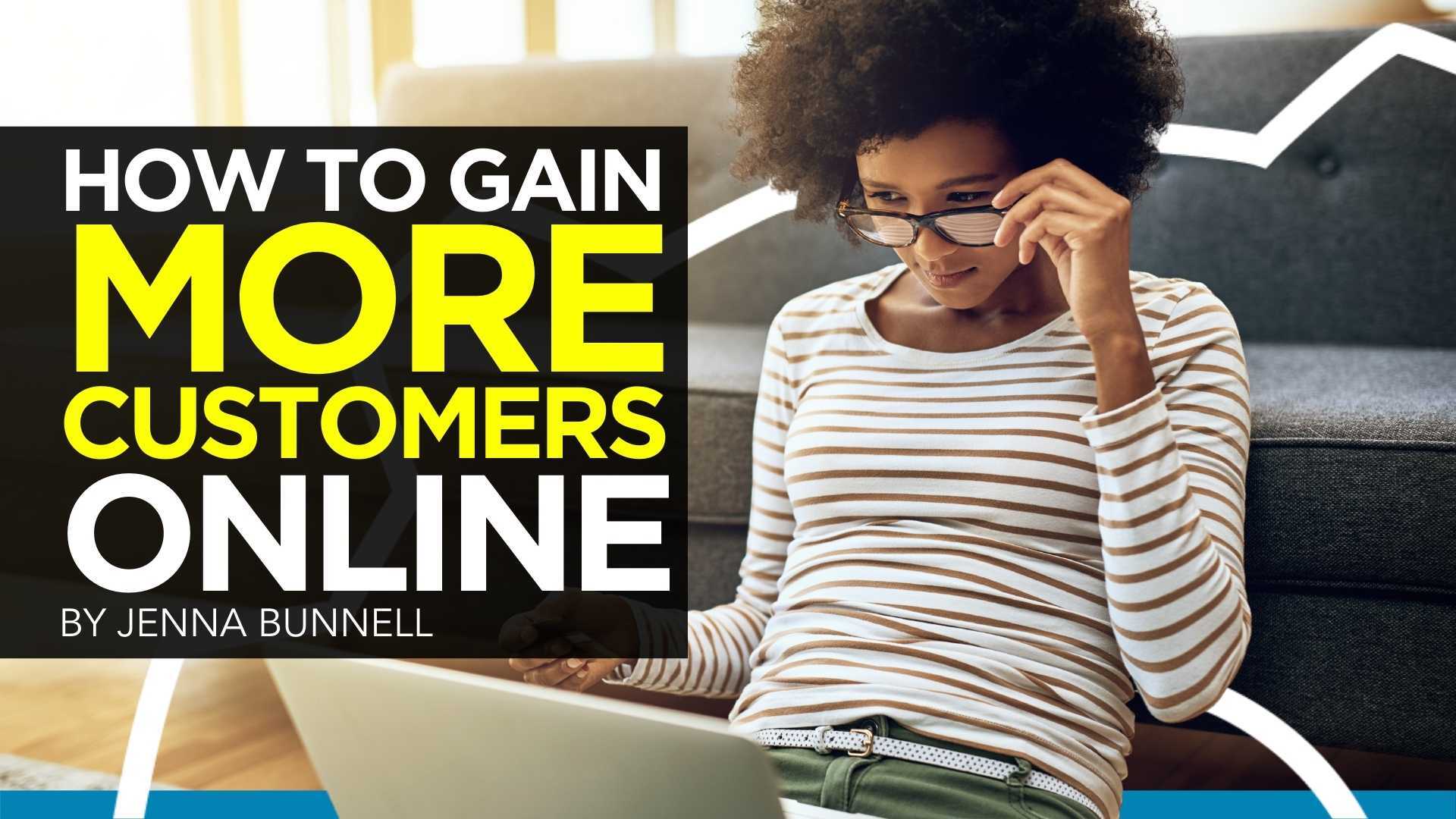

Image sourced from Startup Bonsai
You already know how powerful social media and social media platforms are. After all, there are billions of people using them, around 4.59 billion in 2022 and that number is expected to grow to 5.85 billion by 2027. That’s the majority of the world’s population within reach of any and all of your marketing efforts.
Your customers read your social media posts, and they also read posts and reviews that discuss your brand and your products. But how do you turn those connections into actual leads? How do you use social media as an efficient lead generation tool? We look at some tips so you can maximize the leads that come to you from social media platforms.
Is social media important to your business?

Image sourced from Smart Insights
The simple answer to that is ‘yes’. Even a small B2B business might look to LinkedIn to connect with existing customers and to generate leads. A bigger organization would probably be using a multi-channel approach and focusing on the platforms where most of their demographic targets would be found.
In fact, there are very few businesses who don’t recognize the importance of social media and use it to connect with people. There are many benefits from using social media, from developing your brand to carrying out market research. But what you really want to achieve when setting goals for marketing is more customers, more sales, and of course, more profit.
Social media leads are when potential customers either contact you via social media or provide contact details that indicate they want you to provide them with more info and to contact them. Which platform can supply the best leads will depend on your business type and model, but the most popular tend to be Facebook, Twitter, LinkedIn, and Instagram.
You can even use an Instagram hashtag generator to extend your reach on social media.
8 tips to increasing your leads and customers via social media
So, you know the power of social media graphics and you have already identified which platforms best suit you and are likely to provide genuine leads that your sales and marketing staff can nurture and guide through your sales funnel. How do you ensure that your social media efforts are at the top of their game and attracting as many new customers as possible?
1. Create great (and clickable) content

Free to use image sourced from Pixabay
Your content needs to be compelling and engaging and it needs to stand out from your competitors. If people find your content engaging, then it’s more likely they will want to know more about you and your products. That means content and images that are sharp, to the point, and relevant to the people reading it.
Just as importantly, you want all – or most – of your content to have clickable components. If people need to go searching for more info or for links to your site, they may simply not bother. You could use idea management software to help you organize your thoughts for new content.
If your content is about international calling services, then include a CTA (call to action) and clickable links to the product’s landing page. If a more generic post, you can still include links to your website.
2. Optimize your profiles
If your social media pages are messy and badly organized, it may not matter if you are creating great content. Ensure your profiles not only look good but contain any relevant information a customer might need such as contact info. That can include buttons to contact you by Messenger or WhatsApp, location of physical stores, and details such as email address and phone number.
Most of the social media platforms allow businesses to add ‘buttons’ to their profiles. This could be something as simple as being able to sign up for your newsletter on your Facebook page or being able to book a consultation or make a reservation. Remember, even if a platform does not have this ability, you can cross post from the platforms that do.
3. Ensure your landing pages are up to scratch

Free to use image sourced from Pixabay
It’s not just about your social media pages. They can be as glitzy and attractive as possible but if a customer clicks on a link just to find poorly-designed landing pages, then they may well become part of your bounce rate figures. The page they click to has to be relevant too; there is little point in creating a post about localization software testing then when the customer clicks on the link, they find something completely different.
Your landing page should be clear as to purpose and optimized as much as possible (think A/B testing). Keep any things such as webforms as simple as possible and ensure that the page contains any relevant info such as pricing. As with your social media posts, don’t forget a CTA that encourages customers to buy the product easily.
4. Incentivize where possible
Potential customers probably see multiple marketing posts every day. Why should they choose to click on your links? Incentives can vary greatly depending on the type of lead you want to generate. For example, if you are just looking to increase your newsletter/mailing list for future marketing campaigns, you could decide to offer a discount code when people sign up.
Contests can be a great way to spread both reach and brand awareness. By offering a prize draw when people like and share a post, your content (and thus your products) can reach far more people than might have seen it on your page. Offering discounts and other incentives can be a great tactic for increasing the number of leads generated by your social media content.

Want to get certified in Content Marketing?
Leverage the tools and channels to predictably and profitably drive awareness, leads, sales, and referrals—EVERYTHING you need to know to become a true master of digital marketing. Click Here
5. Personalization
Personalized targeting can be another helpful tactic when it comes to social media lead generation. You are likely already using some level of personalization in your marketing efforts, so why not extend that to social media too.
Some platforms offer targeting tools so that you can reach your ideal demographic targets. You can also segment those targets according to various factors such as location, gender, or age. If you are marketing online phone numbers from Dialpad, then targeting businesses directly that will have an interest in that service is more likely to generate high-quality leads.
6. Don’t forget retargeting
There can be many reasons why a customer does not make an immediate decision to buy from you. It could be a budgetary reason or they simply want to take some time to compare brands and products. However, these are still people who have shown some level of interest in your brand and/or products so they are worth thinking about when it comes to your social media content.
Some platforms allow you to access detailed info about a user who has engaged with you. This means you can customize and personalize those users who have previously shown interest. It provides good ROI too as retargeted customers are 70% more likely to convert than people seeing some of your content for the first time.
7. Data, data, data

Free to use image sourced from Pixabay
If you embark on a new strategy of Twitter, Instagram, or TikTok lead generation then, of course, you want to know how successful your tactics are. That means you need to collect all relevant data and see what the analytics tells you about the leads generated. Were they of high quality? Did they lead to conversions? Having those answers tells you if you need to change anything.
Even using Google Analytics, you can track where any leads came from. It will highlight which social media platforms are working best for you and if you need to put extra work into those that are not performing well. You can also use social analytics tools to see what sort of content, images, and even video are working best for you, engaging with customers, and creating leads.
8. Try using social lead ads
Ok, everyone loves organic lead generation, especially your CFO, but there may come a point when organic sources slow down or even dry up altogether. All platforms offer some form of paid ads that can help increase your lead generation rate. You may not want to do so on all the platforms you utilize but it is a strategy worth exploring.
Again, follow the data and let your analytics show what ads are working on what platforms and try to engage with your audience through comments, make sure to hide comments on facebook that are irrelevant or spoil the brand image. It is likely that you need to create different content for each ad (just as you may have done for different segments of your audience), so pay careful attention to what people are liking and what is leading to quality lead generation.
The Takeaway

Free to use image sourced from Pixabay
Lead generation is a crucial part of any marketing strategy. By generating a steady stream of new (and quality) leads, you are creating the opportunity to turn potential customers into actual customers. That could be achieved by your sales team nurturing those leads and providing the information people need to make a buying decision. It could also be achieved by a well-designed and optimized website and landing pages.
Social media is a great route to spreading awareness of your brand and generating quality leads. It’s definitely not a ‘one size fits all’ tactic and careful thought needs to go into how you will generate leads and where they will originate from. If done properly, you can see an increase in the number of leads generated and, hopefully, an upturn in your conversion rates.
MARKETING
YouTube Ad Specs, Sizes, and Examples [2024 Update]
![YouTube Ad Specs, Sizes, and Examples [2024 Update] YouTube Ad Specs, Sizes, and Examples](https://articles.entireweb.com/wp-content/uploads/2024/06/YouTube-Ad-Specs-Sizes-and-Examples.jpg)
Introduction
With billions of users each month, YouTube is the world’s second largest search engine and top website for video content. This makes it a great place for advertising. To succeed, advertisers need to follow the correct YouTube ad specifications. These rules help your ad reach more viewers, increasing the chance of gaining new customers and boosting brand awareness.
Types of YouTube Ads
Video Ads
- Description: These play before, during, or after a YouTube video on computers or mobile devices.
- Types:
- In-stream ads: Can be skippable or non-skippable.
- Bumper ads: Non-skippable, short ads that play before, during, or after a video.
Display Ads
- Description: These appear in different spots on YouTube and usually use text or static images.
- Note: YouTube does not support display image ads directly on its app, but these can be targeted to YouTube.com through Google Display Network (GDN).
Companion Banners
- Description: Appears to the right of the YouTube player on desktop.
- Requirement: Must be purchased alongside In-stream ads, Bumper ads, or In-feed ads.
In-feed Ads
- Description: Resemble videos with images, headlines, and text. They link to a public or unlisted YouTube video.
Outstream Ads
- Description: Mobile-only video ads that play outside of YouTube, on websites and apps within the Google video partner network.
Masthead Ads
- Description: Premium, high-visibility banner ads displayed at the top of the YouTube homepage for both desktop and mobile users.
YouTube Ad Specs by Type
Skippable In-stream Video Ads
- Placement: Before, during, or after a YouTube video.
- Resolution:
- Horizontal: 1920 x 1080px
- Vertical: 1080 x 1920px
- Square: 1080 x 1080px
- Aspect Ratio:
- Horizontal: 16:9
- Vertical: 9:16
- Square: 1:1
- Length:
- Awareness: 15-20 seconds
- Consideration: 2-3 minutes
- Action: 15-20 seconds
Non-skippable In-stream Video Ads
- Description: Must be watched completely before the main video.
- Length: 15 seconds (or 20 seconds in certain markets).
- Resolution:
- Horizontal: 1920 x 1080px
- Vertical: 1080 x 1920px
- Square: 1080 x 1080px
- Aspect Ratio:
- Horizontal: 16:9
- Vertical: 9:16
- Square: 1:1
Bumper Ads
- Length: Maximum 6 seconds.
- File Format: MP4, Quicktime, AVI, ASF, Windows Media, or MPEG.
- Resolution:
- Horizontal: 640 x 360px
- Vertical: 480 x 360px
In-feed Ads
- Description: Show alongside YouTube content, like search results or the Home feed.
- Resolution:
- Horizontal: 1920 x 1080px
- Vertical: 1080 x 1920px
- Square: 1080 x 1080px
- Aspect Ratio:
- Horizontal: 16:9
- Square: 1:1
- Length:
- Awareness: 15-20 seconds
- Consideration: 2-3 minutes
- Headline/Description:
- Headline: Up to 2 lines, 40 characters per line
- Description: Up to 2 lines, 35 characters per line
Display Ads
- Description: Static images or animated media that appear on YouTube next to video suggestions, in search results, or on the homepage.
- Image Size: 300×60 pixels.
- File Type: GIF, JPG, PNG.
- File Size: Max 150KB.
- Max Animation Length: 30 seconds.
Outstream Ads
- Description: Mobile-only video ads that appear on websites and apps within the Google video partner network, not on YouTube itself.
- Logo Specs:
- Square: 1:1 (200 x 200px).
- File Type: JPG, GIF, PNG.
- Max Size: 200KB.
Masthead Ads
- Description: High-visibility ads at the top of the YouTube homepage.
- Resolution: 1920 x 1080 or higher.
- File Type: JPG or PNG (without transparency).
Conclusion
YouTube offers a variety of ad formats to reach audiences effectively in 2024. Whether you want to build brand awareness, drive conversions, or target specific demographics, YouTube provides a dynamic platform for your advertising needs. Always follow Google’s advertising policies and the technical ad specs to ensure your ads perform their best. Ready to start using YouTube ads? Contact us today to get started!
MARKETING
Why We Are Always ‘Clicking to Buy’, According to Psychologists

Amazon pillows.
MARKETING
A deeper dive into data, personalization and Copilots
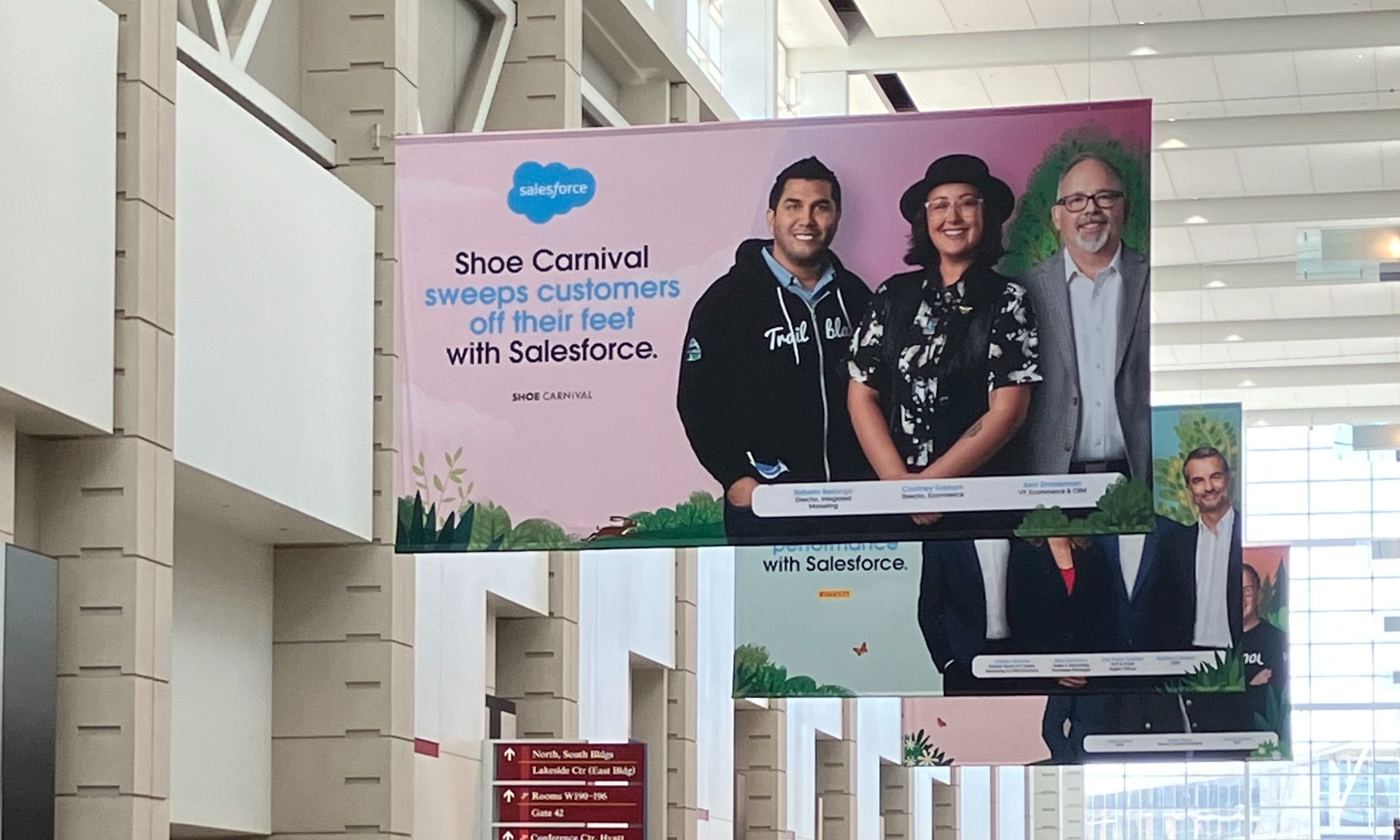
Salesforce launched a collection of new, generative AI-related products at Connections in Chicago this week. They included new Einstein Copilots for marketers and merchants and Einstein Personalization.
To better understand, not only the potential impact of the new products, but the evolving Salesforce architecture, we sat down with Bobby Jania, CMO, Marketing Cloud.
Dig deeper: Salesforce piles on the Einstein Copilots
Salesforce’s evolving architecture
It’s hard to deny that Salesforce likes coming up with new names for platforms and products (what happened to Customer 360?) and this can sometimes make the observer wonder if something is brand new, or old but with a brand new name. In particular, what exactly is Einstein 1 and how is it related to Salesforce Data Cloud?
“Data Cloud is built on the Einstein 1 platform,” Jania explained. “The Einstein 1 platform is our entire Salesforce platform and that includes products like Sales Cloud, Service Cloud — that it includes the original idea of Salesforce not just being in the cloud, but being multi-tenancy.”
Data Cloud — not an acquisition, of course — was built natively on that platform. It was the first product built on Hyperforce, Salesforce’s new cloud infrastructure architecture. “Since Data Cloud was on what we now call the Einstein 1 platform from Day One, it has always natively connected to, and been able to read anything in Sales Cloud, Service Cloud [and so on]. On top of that, we can now bring in, not only structured but unstructured data.”
That’s a significant progression from the position, several years ago, when Salesforce had stitched together a platform around various acquisitions (ExactTarget, for example) that didn’t necessarily talk to each other.
“At times, what we would do is have a kind of behind-the-scenes flow where data from one product could be moved into another product,” said Jania, “but in many of those cases the data would then be in both, whereas now the data is in Data Cloud. Tableau will run natively off Data Cloud; Commerce Cloud, Service Cloud, Marketing Cloud — they’re all going to the same operational customer profile.” They’re not copying the data from Data Cloud, Jania confirmed.
Another thing to know is tit’s possible for Salesforce customers to import their own datasets into Data Cloud. “We wanted to create a federated data model,” said Jania. “If you’re using Snowflake, for example, we more or less virtually sit on your data lake. The value we add is that we will look at all your data and help you form these operational customer profiles.”
Let’s learn more about Einstein Copilot
“Copilot means that I have an assistant with me in the tool where I need to be working that contextually knows what I am trying to do and helps me at every step of the process,” Jania said.
For marketers, this might begin with a campaign brief developed with Copilot’s assistance, the identification of an audience based on the brief, and then the development of email or other content. “What’s really cool is the idea of Einstein Studio where our customers will create actions [for Copilot] that we hadn’t even thought about.”
Here’s a key insight (back to nomenclature). We reported on Copilot for markets, Copilot for merchants, Copilot for shoppers. It turns out, however, that there is just one Copilot, Einstein Copilot, and these are use cases. “There’s just one Copilot, we just add these for a little clarity; we’re going to talk about marketing use cases, about shoppers’ use cases. These are actions for the marketing use cases we built out of the box; you can build your own.”
It’s surely going to take a little time for marketers to learn to work easily with Copilot. “There’s always time for adoption,” Jania agreed. “What is directly connected with this is, this is my ninth Connections and this one has the most hands-on training that I’ve seen since 2014 — and a lot of that is getting people using Data Cloud, using these tools rather than just being given a demo.”
What’s new about Einstein Personalization
Salesforce Einstein has been around since 2016 and many of the use cases seem to have involved personalization in various forms. What’s new?
“Einstein Personalization is a real-time decision engine and it’s going to choose next-best-action, next-best-offer. What is new is that it’s a service now that runs natively on top of Data Cloud.” A lot of real-time decision engines need their own set of data that might actually be a subset of data. “Einstein Personalization is going to look holistically at a customer and recommend a next-best-action that could be natively surfaced in Service Cloud, Sales Cloud or Marketing Cloud.”
Finally, trust
One feature of the presentations at Connections was the reassurance that, although public LLMs like ChatGPT could be selected for application to customer data, none of that data would be retained by the LLMs. Is this just a matter of written agreements? No, not just that, said Jania.
“In the Einstein Trust Layer, all of the data, when it connects to an LLM, runs through our gateway. If there was a prompt that had personally identifiable information — a credit card number, an email address — at a mimum, all that is stripped out. The LLMs do not store the output; we store the output for auditing back in Salesforce. Any output that comes back through our gateway is logged in our system; it runs through a toxicity model; and only at the end do we put PII data back into the answer. There are real pieces beyond a handshake that this data is safe.”
-
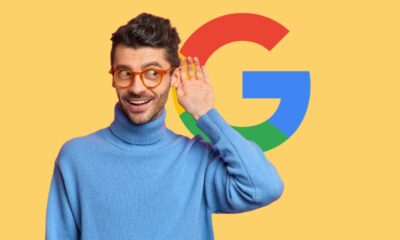
 SEO7 days ago
SEO7 days agoGoogle’s Revamped Documentation Shows 4 Reasons To Refresh Content
-
SEARCHENGINES5 days ago
Daily Search Forum Recap: August 26, 2024
-
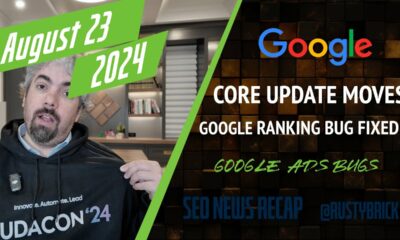
 SEARCHENGINES7 days ago
SEARCHENGINES7 days agoGoogle Ranking Bug Fixed, August Core Update Swings, AI Overviews, Google Ads Bug & More
-
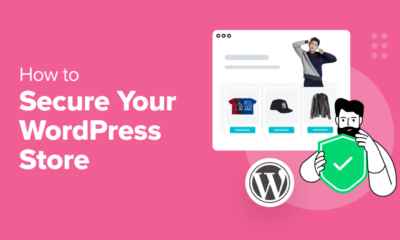
 WORDPRESS7 days ago
WORDPRESS7 days agoHow to Secure Your WordPress Store
-
SEARCHENGINES4 days ago
Daily Search Forum Recap: August 27, 2024
-

 AFFILIATE MARKETING7 days ago
AFFILIATE MARKETING7 days agoBusiness Owners are Batting 1,000 With This All-in-One Management Hub
-

 SEARCHENGINES6 days ago
SEARCHENGINES6 days agoGoogle Migrating All To Google Merchant Center Next By September
-

 WORDPRESS5 days ago
WORDPRESS5 days ago10 Best StudioPress Alternatives (Genesis Framework)




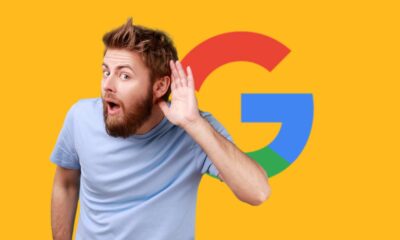

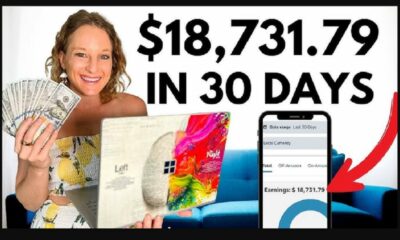





You must be logged in to post a comment Login